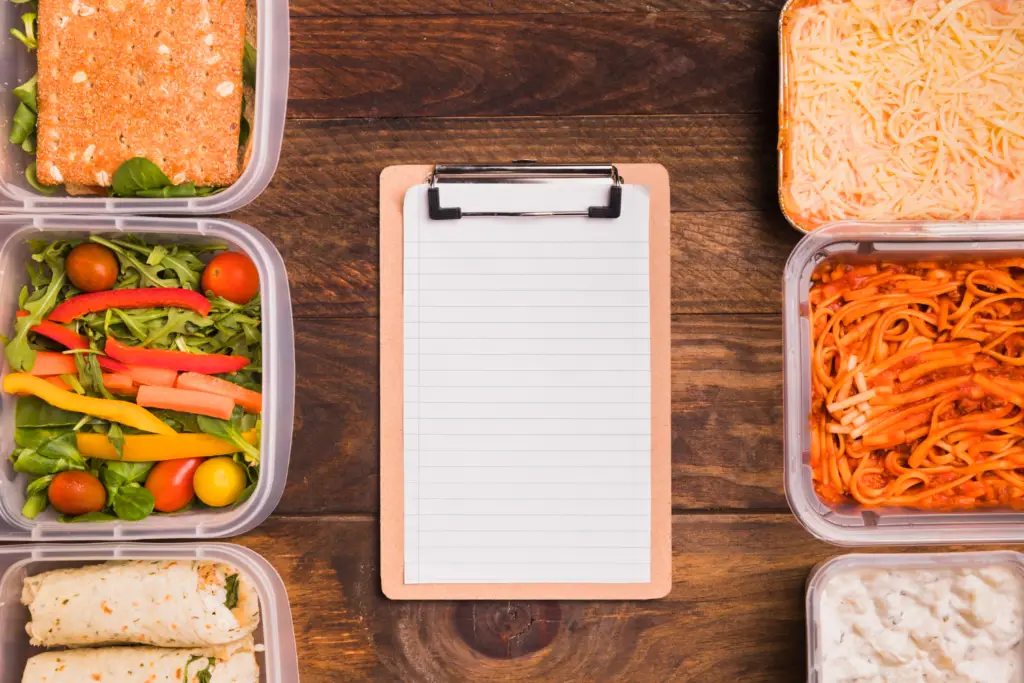When life gets busy, cooking dinner every night can feel like a daunting task. Batch cooking offers a time-saving solution that allows you to prepare a week’s worth of meals in just one afternoon. With a bit of planning and preparation, you can fill your fridge and freezer with ready-to-eat meals, reduce weekday stress, and enjoy homemade dinners without the hassle.
Batch cooking is about making life easier. Whether you’re looking to eat healthier, save money, or simply spend less time in the kitchen, this guide will walk you through the basics of batch cooking, including tips, tricks, and meal ideas to get you started.

Step 1: Plan Your Menu
Successful batch cooking starts with a plan. Choose meals that are easy to prepare in large quantities, can be stored well, and offer variety throughout the week. Consider dishes that use similar ingredients to save time and money.
How to Plan a Weekly Menu:
- Choose a Few Core Recipes: Aim for 3-4 main recipes that can be mixed and matched or served with different sides. Examples include a hearty stew, a pasta bake, and a stir-fry.
- Consider Versatile Ingredients: Choose ingredients that can be used in multiple recipes, such as rice, pasta, roasted vegetables, and shredded chicken.
- Plan for Variety: Avoid meal fatigue by including different types of dishes, like soups, casseroles, salads, and one-pot meals.
- Use Family Favorites: Pick recipes that you know your family loves and throw in one new recipe to keep things interesting.
Tip: Write down your menu and make a shopping list based on the ingredients you’ll need for each recipe. This ensures you don’t forget anything and helps you stay organized during your cooking session.
Step 2: Gather Your Tools and Supplies
Having the right tools makes batch cooking much smoother. Make sure you have enough pots, pans, and storage containers before you begin. This minimizes interruptions and keeps the kitchen running efficiently.
Essential Batch Cooking Tools:
- Large Pots and Pans: For making soups, stews, pasta, and large quantities of food.
- Sheet Pans: Perfect for roasting vegetables, baking chicken, or cooking multiple items at once.
- Slow Cooker or Instant Pot: Great for hands-off cooking and preparing large batches of food with minimal effort.
- Storage Containers: Use glass or BPA-free plastic containers to store meals. Consider using both single-portion containers for grab-and-go meals and larger containers for family-style dishes.
- Freezer Bags: Ideal for soups, stews, and sauces that you can freeze flat to save space.
Tip: Label your storage containers with the name of the dish and the date it was made. This makes it easy to keep track of what’s in your fridge or freezer.
Step 3: Start with Ingredients That Take the Longest to Cook
To maximize your time, start with items that require longer cooking times, such as roasted vegetables, grains (like rice or quinoa), or proteins. By the time these are done, you’ll be ready to move on to quicker dishes.
Examples of Long-Cooking Ingredients:
- Proteins: Roast chicken, lamb, or cook ground meat for various dishes.
- Whole Grains: Cook rice, quinoa, or pasta in large batches. These are versatile and can be used in salads, casseroles, and stir-fries.
- Vegetables: Roast or steam a large batch of vegetables, such as carrots, broccoli, sweet potatoes, or bell peppers. Roasted vegetables add flavor and can be easily reheated.
Tip: If you have multiple items that need to go in the oven, set the oven temperature to accommodate all of them and cook everything at once. This saves both time and energy.
Step 4: Cook Core Dishes in Batches
Now it’s time to cook the main dishes! By focusing on recipes that are easy to scale up, you can prepare multiple meals at once. Here are some batch-friendly meal ideas to consider:
Batch Cooking Meal Ideas:
- One-Pot Pasta Bake: Make a large pasta bake with vegetables, pasta sauce, cheese, and your choice of protein. This dish reheats well and can be served with a simple side salad.
- Hearty Soup or Stew: Prepare a big pot of vegetable stew, lamb stew, or chicken soup. Soups are easy to store and freeze well for later use.
- Stir-Fry Kits: Make a large stir-fry with chicken or lamb, mixed vegetables, and a simple sauce. Divide it into containers and serve with rice or noodles during the week.
- Sheet Pan Dinners: Roast a variety of proteins and vegetables on a sheet pan. For example, cook chicken breasts, lamb meatballs, or seasoned tofu along with vegetables. These can be mixed and matched with different sides.
- Rice or Grain Bowls: Cook a large batch of grains, like rice or quinoa, and pair with various toppings like roasted veggies, beans, or cooked meat. Create different “bowl” meals by adding sauces or dressings.
Tip: Double up on recipes if you want extra servings for the freezer. Soups, stews, and casseroles freeze particularly well and make easy meals for later weeks.
Step 5: Cool, Portion, and Store
Once your meals are cooked, allow them to cool before transferring them to containers. Portion meals based on your family’s needs—individual servings for grab-and-go meals, and larger portions for family dinners.
How to Store Your Meals:
- Divide into Portions: For family-style meals, use larger containers. For single servings, use smaller containers for easy grab-and-go options.
- Label Everything: Label each container with the meal name and date. If you’re freezing meals, note any reheating instructions as well.
- Organize the Fridge and Freezer: Place ready-to-eat meals at the front of the fridge for easy access. Store freezer meals flat to save space, and keep your freezer organized so meals are easy to find.
Tip: If you’re using freezer bags for soups and stews, freeze them flat for easy stacking and storage. This saves freezer space and keeps everything organized.
Step 6: Reheat and Enjoy
With your meals prepped and ready, all you have to do during the week is reheat and serve. Most meals can be reheated in the microwave, on the stovetop, or in the oven, depending on your preference.
Reheating Tips:
- Microwave: Ideal for single servings. Cover the dish with a damp paper towel to keep food moist.
- Stovetop: Great for soups, stews, and saucy dishes. Heat slowly and stir occasionally to ensure even heating.
- Oven: Perfect for casseroles or baked dishes. Cover with foil to retain moisture and reheat at 350°F (175°C) until warmed through.
Tip: If you’re reheating a freezer meal, take it out of the freezer the night before and let it thaw in the fridge. This reduces reheating time and ensures even heating.
Sample Batch Cooking Menu for a Week
Need some inspiration? Here’s a sample menu to get you started with batch cooking for the week.
Monday
- Dinner: Hearty Vegetable and Lentil Stew with crusty bread
Tuesday
- Dinner: Chicken and Vegetable Stir-Fry served with rice
Wednesday
- Dinner: Baked Pasta with Roasted Vegetables and Cheese
Thursday
- Dinner: Lamb Stew with Quinoa and a side salad
Friday
- Dinner: DIY Rice Bowls with choice of toppings (roasted vegetables, grilled chicken, beans, and fresh greens)
Saturday
- Dinner: Sheet Pan Chicken Fajitas with tortillas and all the fixings
Sunday
- Dinner: Leftover night! Use any remaining meals or mix and match items to create something new.
Enjoy the Benefits of Batch Cooking
With just one afternoon of cooking, you’ve prepared a week’s worth of meals, saved time, and reduced stress. Batch cooking is a powerful tool for busy families, allowing you to eat well without spending hours in the kitchen every day. By using versatile ingredients, focusing on easy-to-make recipes, and organizing your fridge and freezer, you can make homemade meals a regular part of your routine—even on the busiest of weeks.
So, set aside some time this weekend, gather your ingredients, and give batch cooking a try. Your future self (and your family) will thank you!
If you’re looking for a time saving gadget follow this links
FAQ Section
Q: Can I batch cook meals for breakfast and lunch too?
A: Absolutely! You can make breakfast options like overnight oats, egg muffins, or smoothie packs. For lunch, consider salads, wraps, or rice bowls that are easy to assemble.
Q: How long do batch-cooked meals stay fresh in the fridge?
A: Most meals stay fresh for about 3-5 days in the fridge. For anything you won’t eat within that time, consider freezing to keep it fresh longer.
Q: Can I customize batch cooking for dietary preferences?
A: Yes! Batch cooking is versatile and can be adapted for any dietary needs. Just choose recipes that fit your preferences, like vegetarian stews, gluten-free pasta bakes, or keto-friendly casseroles.
Let me know if you’d like more meal prep tips or have any other questions. Here’s to making weeknight dinners easy and stress-free!



